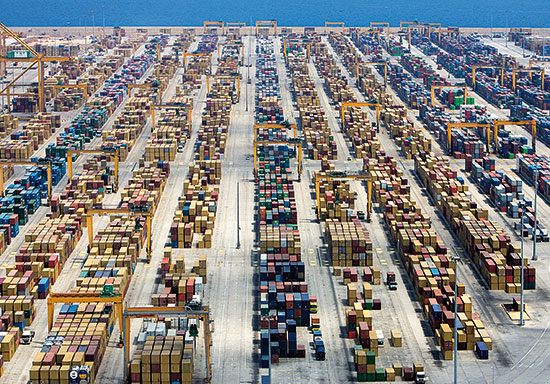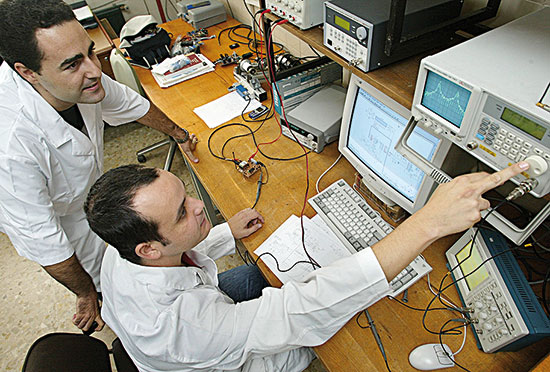 |
||||||||||||||||||||||||||||||||||||||||||||||||||||||||||||||||||||||||||||||||
|
The competitiveness of a production model depends on its ability to adapt to economic developments and changes in demand. Innovation is a prerequisite for increased competitiveness, but must be accompanied by a favourable macroeconomic environment, by an efficient educational system, by markets for goods and services that promote competition or by a labour market that helps businesses adjust to changes in the economic environment. The first issue that must be addressed when considering how to improve an economy’s competitiveness is to highlight the need for such improvement, identifying the main causes underlying the alleged weakness of the productive network we are aiming to reform. ■ What is a production model? Accepting a certain degree of simplification, from the static perspective, a production model is defined by the set of features that characterize how companies produce and distribute goods and services. These features are, obviously, directly related to the nature of competitive advantage and, in some way, with the pattern of sectoral specialization. From a dynamic perspective, however, a production model is characterized by the ability of companies to adapt quickly to new conditions imposed by changes in the international economic environment, technological advances and shifting patterns of demand (CEV, 2009). Both these factors, i.e., the way of competing on the market and the flexibility to adapt to changes, are decisive in establishing a production model’s capacity to increase the per capita income of an economy, contribute to improving employment levels and quality, and, finally, to promote its citizens’ welfare. In short, to demarcate the strength of its long-term growth. ■ PRODUCTION MODEL, SECTORAL STRUCTURE AND ECONOMIC DEVELOPMENT A production model can be composed of a variety of activities ranging from traditional sectors related to food, clothing, trade or tourism, to the most technologically advanced or complex ones, such as aeronautics, information technology, electronics or telecommunications. There are evident advantages of having a production model in which these advanced activities have a significant weight. These are activities with high productivity levels, whose demand has grown steadily over a long period of time, and, what is more, they are in a better position to withstand international competition, since they tend to afford companies a competitive advantage that is sustained, in the form of highly specialized knowledge that is difficult to reproduce. However, we should not fall into the trap of automatically associating the economic development of a territory with a specific sectoral composition of production. There are several reasons. First, given the historically proven randomness that characterizes economic development, there is no guarantee that activities considered to be dynamic today remain so in the future, and that they will not give way to other totally unexpected ones, unpredictable in the present circumstances. It would suffice to compare the shopping basket of an average Spanish family in the late 1950s with that of a modern family to realize that not only did many of the products that are now part of everyday life not exist then, but they could not even be imagined. Furthermore, many goods and services considered traditional are currently undergoing such qualitative changes, for instance organic or health foods, ergonomic furniture, electronic toys, wine tourism, new commercial distribution systems…, that it is difficult to accept we are talking about the same products. In addition, empirical evidence shows that the sectoral composition of production does not explain the differences in the growth of countries with similar levels of development, but what really matters is the behaviour of individual sectors. In other words, the success of an economy is ensured by the strong performance of its businesses and individual sectors rather than by its sectoral composition. ■ INNOVATION AND COMPETITIVENESS IN BUSINESS One of the characteristics of productive models in the most dynamic economies is, specifically, that they take innovations on board –including those of an organizational nature– concerned with production processes and distribution of goods and services that are considered traditional. This affords new competitive advantages to innovative firms in a context of the weakness of their respective sectors on the global level.
It is reasonable therefore to state that competitiveness and innovation are closely related, and the configuration of a robust and efficient innovation system is a key to economic growth and improved living standards of a society. However, for an innovation system to have the desired impact on business competitiveness it is not enough to increase the size of its most common components –scientific, technological, financing and production–, or to improve the connections between them through existing interface mechanisms (García Reche, 2010). A favourable macroeconomic and institutional environment is also required: a public education system that provides training tailored to the needs of businesses; markets for goods and services that work efficiently and encourage entrepreneurial competence; and, a labour market that facilitates quick adaptation of companies to changes in their economic environment and changes in demand. In fact, some of these elements are, in themselves, a basic premise for the development of a successful innovation system. In following this line of argument, it is important to distinguish between internationally competing commercial sectors, in which competitive analysis requires a broad understanding of the global context in which they operate, and domestic or non-commercial sectors, whose performance is closely tied to local policies that set the ground rules for competition in the markets. Among these are many of the service activities in developed countries, which account for three quarters of production and employment. The results in terms of employment and productivity in many service sectors are largely the reflection of the initiative a company takes when faced with regulations. Regulations do not hamper the entry of new companies into the market nor facilitate the exercise of activity to those already established, they tend to increase competition and productivity and thus economic progress. Similarly, greater domestic labour flexibility, less rigid working hours or part-time job agreements are associated with higher employment and more rapid adjustments to changes in the economic situation. ■ SPAIN’S COMPETITIVE POSITION IN THE INTERNATIONAL CONTEXT In the international context, the competitive position of the Spanish economy can be gauged through indicators such as those developed by the World Economic Forum (WEF), which include, in addition to innovation, other factors determining a country’s competitiveness. In its latest report for 2010-2011, the WEF ranks Spain in the forty-second position (World Economic Forum, 2010). The Spanish economy is ranked in one of the last positions in the Economic and Monetary Union of the EU, and is even overtaken by emerging European economies like the Czech Republic. The handicaps preventing the Spanish economy from competing successfully in international markets are mainly in areas such as macroeconomic stability –ranked in sixty-sixth position– or its institutional situation, which clearly has room for improvement. According to the WEF, the major problem facing the competitiveness of Spanish companies is, however, the low efficiency with which labour markets work, highlighting the constraints imposed by labour legislation in the wage formation process and especially in hiring and firing practices.
Indicators of competitiveness of the Spanish economy, 2010-2011. Going another step in the analysis of competitiveness factors in the Spanish economy, and in particular those underpinning innovation, we see that with the exception of patents, the position is one of clear competitive disadvantage. The situation is particularly unfavourable with respect to the quality of research institutions or collaboration between companies and universities on issues related to research and development.
Innovation indicators of the Spanish economy, 2010-2011. ■ REGIONAL ECONOMY: IS A CHANGE OF MODEL NEEDED? On moving the focus of the competitiveness analysis to the Valencian economy, the assessment is even more unfavourable. With admirable exceptions, over the last decade, most Valencian companies have proved incapable or lacking in the flexibility needed to confront the organizational changes imposed by the new international economic framework –globalization– and shifting requirements of demand. In relation to innovation, there are shortcomings such as poor spending on R&D by Valencian companies, the scarcity of jobs in the regional production structure for the most highly qualified graduates or the distance that is sometimes observed between companies and universities on an issue as important as knowledge transfer. In this sense, improving the Valencia production model has much to do with overcoming a kind of «multiple sclerosis» that afflicts the whole of the regional innovation system and whose treatment requires qualitative progress in the training of workers and the education system as a whole, a redefinition of the role played by universities, increased business investment in R&D and innovation and generally improved performance of knowledge-producing institutions and diverse interface mechanisms linking them with the productive system. However, this is not sufficient to ensure an improvement in the competitiveness of the Valencian economy. Progress made in terms of the production model must be accompanied by a set of policies aimed at removing administrative barriers to entrepreneurship and to improve competition and efficiency with which markets operate in goods and services, as well as other factors, including the labour market. Although many of these policies are national in scope, the role of regional administration is important, and in some cases, decisive, as in the regulation of commercial distribution and tourism. Finally, an improved Valencian production model requires measures to reduce the frequent small-scale of businesses, which prevents companies –above all industrial ones– from adopting truly global organizational strategies, forcing them to maintain a subordinate position in the global value chain. In conclusion, a change in the Spanish production model, and likewise, the Valencian one must be approached from a systemic perspective, incorporating, along with policies promoting innovation at all levels, the structural reforms necessary to achieve a significant improvement in our competitive position in international markets. Bibliography Andrés García Reche. Professor of Applied Economy, University of Valencia. |
© A. Ponce & I. Rovira A country or region’s production model integrates a diverse range of activities, from the traditional ones, such as trade and export of goods, to the most technologically advanced. The picture shows Valencia Port. «The situation is particularly unfavourable with respect to the quality of research institutions or collaboration between companies and universities on issues related to research and development» |
|||||||||||||||||||||||||||||||||||||||||||||||||||||||||||||||||||||||||||||||
Search
© Mètode 2011 - 68. Online only. After the Crisis - Winter 2010/11






